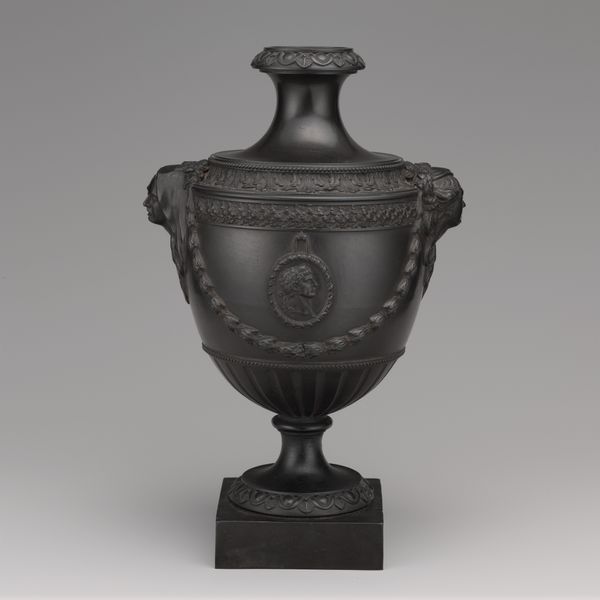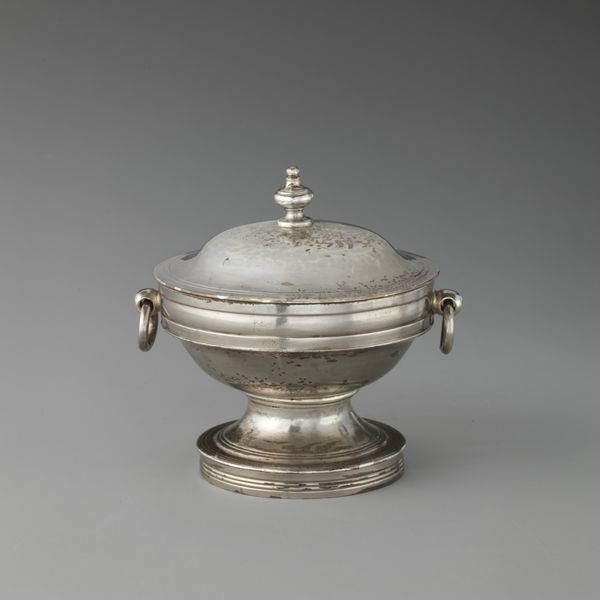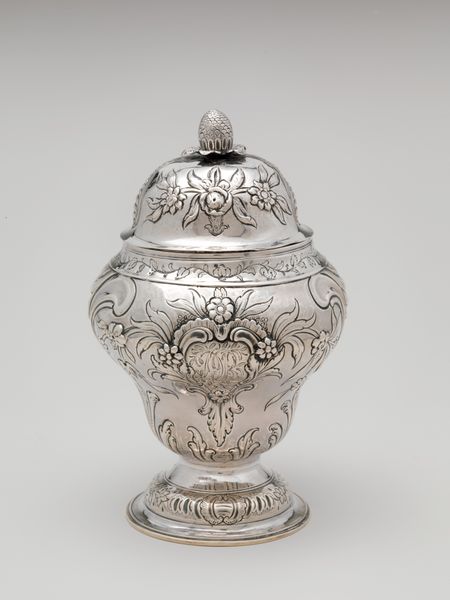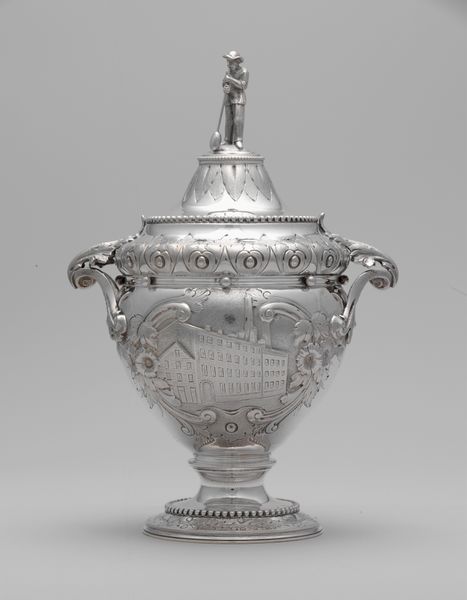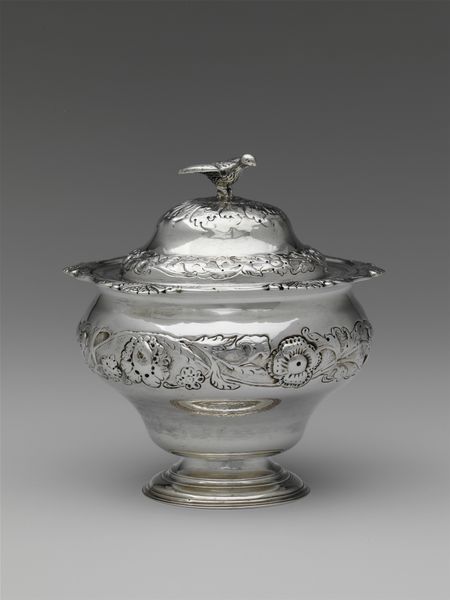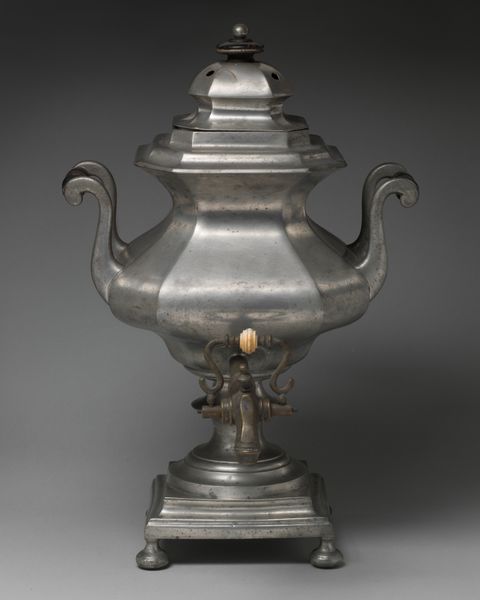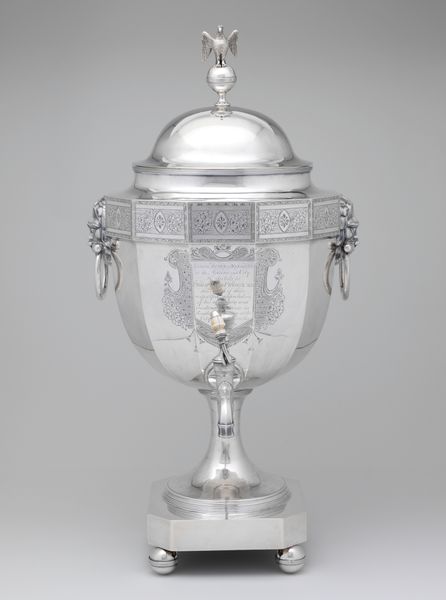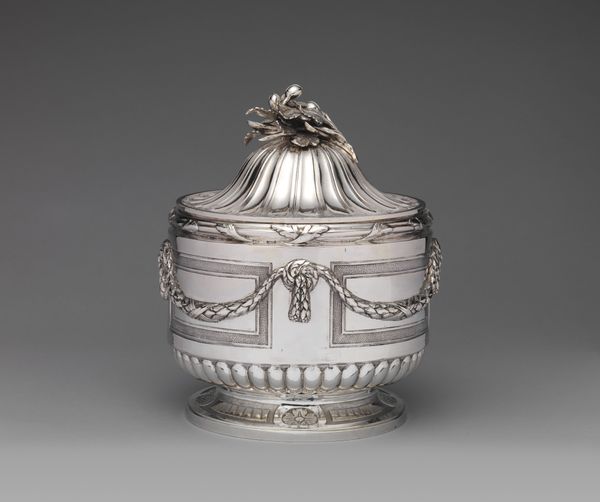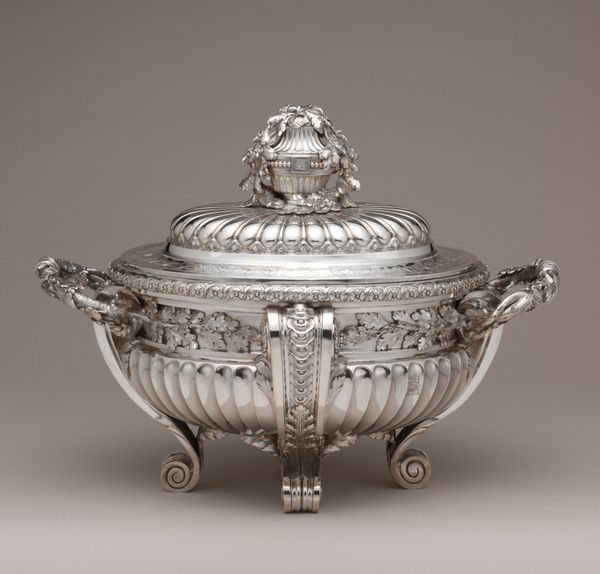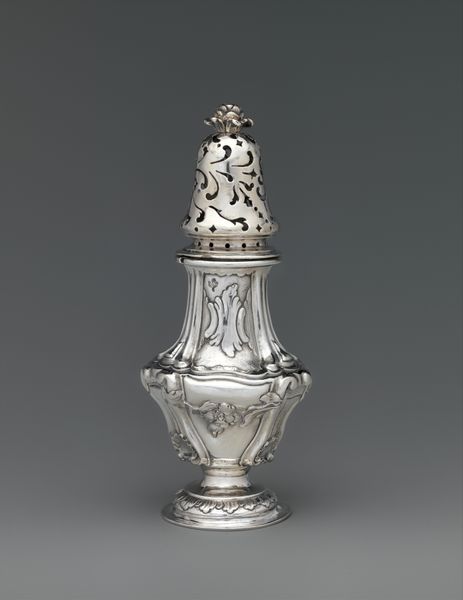
assemblage, ceramic, sculpture
#
neoclacissism
#
assemblage
#
ceramic
#
sculpture
#
decorative-art
Dimensions: Height (with cover): 20 in. (50.8 cm)
Copyright: Public Domain
This basalt urn with cover, created by Wedgwood and Co., stands as a poignant reminder of the enduring human fascination with mortality and remembrance. Note the festoons and laurel leaves. These are not merely decorative; they are potent symbols. Festoons, often used in Roman celebrations, signify joy and festivity, adorning everything from altars to triumphal arches. Yet, here, they're draped somberly on an urn, suggesting a bittersweet commemoration. Laurel, a classical emblem of triumph and eternal life, further enriches this juxtaposition. These motifs have their roots in ancient Greece and Rome, where they were used to honor heroes and commemorate significant events. Consider how such symbols resurface through the Renaissance, adorning palaces and public monuments, each time carrying echoes of their past lives. The urn itself, an archetypal vessel for ashes, speaks to our collective unconscious, conjuring images of loss, grief, and the eternal cycle of life. Its black basalt material absorbs light, amplifying its somber presence. The emotional resonance of these symbols lies in their ability to engage us on a deep, subconscious level. The enduring power of these classical motifs lies in their cyclical progression, transcending time and adapting to new contexts, each iteration carrying layers of accumulated meaning.
Comments
No comments
Be the first to comment and join the conversation on the ultimate creative platform.

